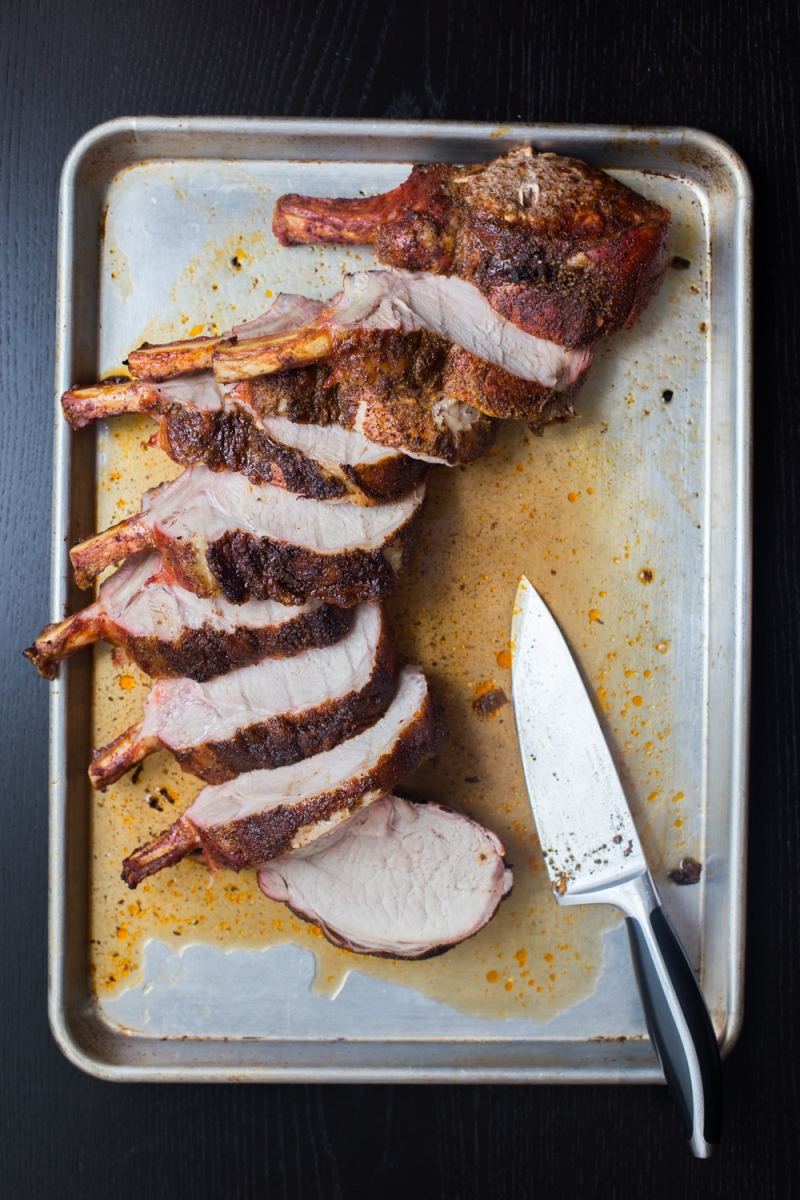
Today’s recipe is a combination of two recent events in our house. First, I recently bought a remote grill thermometer, and I was itching to try it out. The thermometer has has two probes: one that goes in the meat and one to gauge the overall grill temperature. It’s an easy way to keep an eye on both the grill temp and your food without having to open the grill lid. Plus, it has a wireless receiver so I can keep an eye on the temperatures from afar, perfect for some wintertime grilling.
Second, we recently came across a beautiful French Rack of Pork at our local market, which is a shoulder pork loin still attached to the ribs; basically, it’s a rack of center cut pork chops. As luck would have it, the rack was on sale; my guess is that it intimidated customers and the store was having a hard time selling it. Either way, we couldn’t turn down the price, so I dragged the big hunk of meat home and the rest is history.
I decided to smoke the rack on my gas grill, which would allow me to give it a flavorful crust without overcooking the tender meat inside. Just to be safe, I brined the pork overnight to keep it from drying out, which was also a good call. The end result was crisp on the outside, and ridiculously juicy and flavorful on the inside.





